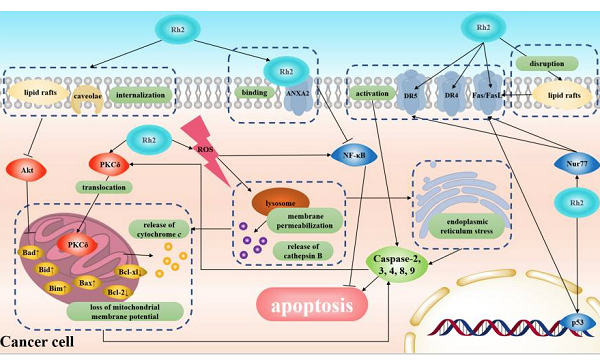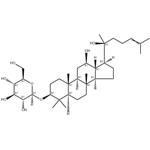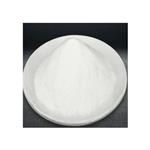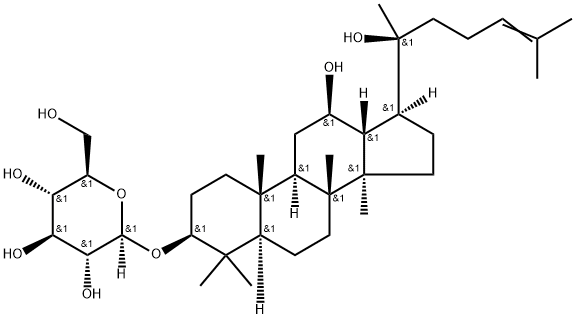Unraveling the Anticancer Mechanisms of Ginsenoside Rh2
Introduction
Ginsenoside Rh2 (GRh2) is one of the major bioactive ginsenosides. Rh2 is a triterpene saponin isolated from Panax ginseng root, sharing a similar basic structure, including a gonane steroid nucleus and 17 carbon atoms arranged in four rings, which have some steroid-like activity. It has been demonstrated that GRh2 exhibits pharmacological activity against multiple cancers and can improve immune function. It can regulate various signaling pathways associated with anticancer[1].

GRh2-induced apoptosis
The apoptosis induced by GRh2 could be observed in a majority of common cancer models, and like other conventional anticancer drugs, caspase regulation plays a critical role in this apoptotic process. Caspases are a conserved family of enzymes that can cleave an aspartate residue in their substrates. Once effector caspases (which include caspase-2, -4, -8, -9) are activated, the caspase cascade will be initiated, and effector caspases like caspase-3 will cleave various cellular targets like poly ADP-ribose polymerase (PARP), which results in cell death eventually. However, activating the caspase-dependent pathway seems not the only way for GRh2 to trigger apoptosis; some caspase-independent pathways associated with NF-κB are also involved in GRh2-induced apoptosis.
Anti-proliferation
The growth of the tumour can also be suppressed by GRh2. In uterine leiomyoma cells, GRh2 can induce the activation of p38 MAPK and inhibition of c-Src, which both suppress the phosphorylation of estrogen receptor alpha (a proliferative effects initiator). Moreover, GRh2-induced anti-proliferation of cancer cells was mainly associated with the cell-cycle arrest at the G0/G1 and G1/S boundary. A large number of studies demonstrate that the retinoblastoma tumor suppressor protein (Rb), epidermal growth factor (EGF), microRNA (miR), and histone are all involved in GRh2-inhibited proliferation[2].
Tumor angiogenesis, metastasis, and invasion
GRh2 has anti-angiogenic, anti-metastatic, and anti-invasive activities that play critical roles in inhibiting tumor development and progression. Anti-angiogenesis blocks the way for the tumor to obtain sufficient nutrient supply, which inhibits tumor metastasis. The anti-angiogenic effect of GRh2 is achieved by inhibiting the expression of vascular endothelial growth factor (VEGF), which can promote tumour outgrowth and invasion. Specifically, GRh2-induced up-regulation of cyclin and CBS domain divalent metal cation transport mediator 1, the increase in miR-497 level and the reversion from the phenotype of M2 macrophages to M1 subtype all contribute to inhibition of VEGF.
The suppression of matrix metalloproteinases (MMPs) is the key to the GRh2-induced anti-metastatic effect. Four different ways have been reported to inhibit the expression of MMPs with GRh2 treatment. GRh2 can increase HDAC4 level and lead to the recruitment of HDAC4 to the MMP-3 promoter site and the binding site of proximal analyze activator protein 1, which inhibits the transcription of MMP-3. MicroRNAs are also involved in GRh2-induced inhibition of MMPs. The overexpression of miR-31 increased MMP-2 and MMP-9 levels, consequently reversing the anti-metastatic effect of GRh2. As mentioned above, GRh2-induced ROS can activate the NF-кB pathway, and the IL-6 level was up-regulated. IL-6 can promote the expression of MMPs via activating the STAT3 signaling pathway, and GRh2 can reverse the overexpression of MMPs by inhibiting the interaction between IL-6 and its receptor. Moreover, the MMP-13 was found inhibited owing to the suppression of the PI3k/Akt pathway induced by GRh2 in glioblastoma multiforme.
GRh2-induced autophagy
The GRh2-induced autophagy has been associated with an increased expression level of autophagy-related protein. During the vesicle nucleation stage of autophagy, Beclin-1 can scaffold the class III PI3K complex, and GRh2 treatment can increase the Beclin-1 level in various cell lines. LC3-II, the conjugation of LC3-I and PE, is an autophagosome marker mediated by ATG7. The higher ATG7 level and LC3-Ⅱ/LC3-Ⅰ ratio can be observed in cells with GRh2 treatment than in control groups. Together, these studies provide evidence supporting the role of GRh2 in inducing autophagy by regulating the expression of autophagy-related proteins. Interestingly, GRh2 was found to inhibit autophagy caused by starvation (free-serum cultivation), and starvation-induced autophagy could suppress the apoptosis of cancer cells.
References:
[1] SUN XIAODAN C Y. Role of ginsenoside Rh2 in tumor therapy and tumor microenvironment immunomodulation[J]. Biomedicine & Pharmacotherapy, 2022, 156. DOI:10.1016/j.biopha.2022.113912.[2] QI-RUI HU . The ways for ginsenoside Rh2 to fight against cancer: the molecular evidences in vitro and in vivo.[J]. Journal of Ginseng Research, 2023, 47 2: 169-352. DOI:10.1016/j.jgr.2022.09.011.
You may like
See also
Lastest Price from Ginsenoside Rh2 manufacturers

US $0.00-0.00/kg2025-05-27
- CAS:
- 78214-33-2
- Min. Order:
- 0.10000000149011612kg
- Purity:
- 99
- Supply Ability:
- 20tons

US $100.00-1000.00/KG2024-08-27
- CAS:
- 78214-33-2
- Min. Order:
- 1KG
- Purity:
- 0.99
- Supply Ability:
- 20 tons


